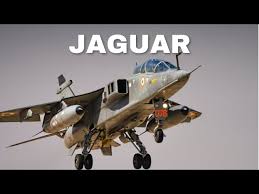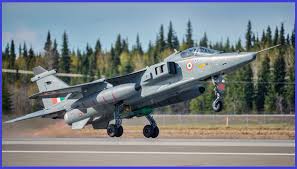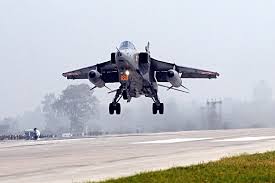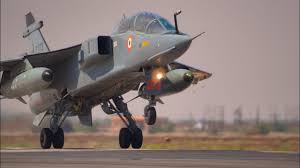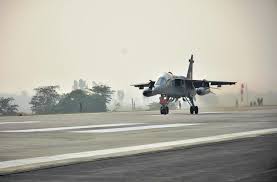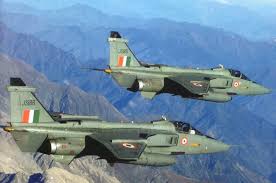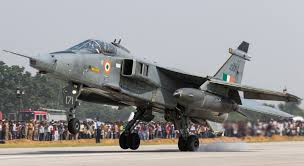
Pic Courtesy Net
Sputnik News sought inputs on the topic.
Recent Media Reports (08 Dec 24)
India is set to finalise a landmark USD 4 billion defence agreement with Russia to acquire an advanced long-range early warning radar system.
Discussions between Indian defence officials and a Russian delegation led by Almaz-Antey, the radar system manufacturer, have progressed rapidly.
Recent high-level talks in New Delhi and Bengaluru have emphasised the importance of involving Indian industry in the project, aligning with the government’s “Make in India” policy.
Around 60 per cent of the system’s components are expected to be manufactured domestically, a move that will promote self-reliance while strengthening Indo-Russian defence ties.
The radar system (likely a Voronezh-M radar) will likely be installed in Chitradurga in Karnataka, a strategically important location with advanced defence and aerospace facilities.
The Voronezh-M is an over-the-horizon (OTH) early warning radar system. Over-the-horizon (OTH) radar functions by using the ionosphere to refract radio waves, allowing detection of targets beyond the line of sight.
The site is expected to provide optimal coverage and integrate smoothly into India’s defence infrastructure, enhancing the country’s ability to monitor threats in real time.
According to claims, over 50 Indian partners, including startups, will manufacture at least 60 per cent of the system. The project is expected to generate substantial employment across the country.
The project is being handled by LRDE (Electronics and Radar Development Establishment), a part of India’s DRDO (Defence Research and Development Organisation).
Voronezh Radar System.
The Voronezh radar system is a series of advanced, long-range radar systems developed by Russia as part of its early warning network to detect ballistic missile launches and track objects in space. It is a key component of Russia’s missile attack warning system. The system is known for its high operational efficiency, modular construction, and relatively rapid deployment compared to earlier generations. The Voronezh radar system can detect and track ballistic missile launches and stealth aircraft and provide situational awareness of space objects.
Types of Voronezh Radars. The Voronezh radars come in several variants, including Voronezh-M, Voronezh-DM, and Voronezh-CM, each tailored for specific detection roles or improved performance.
-
- Voronezh-M (VHF band). It is optimised for detecting objects at long ranges but with lower resolution. The radar is optimised to provide initial warning of medium and long-range ballistic missiles.
-
- Voronezh-DM (UHF band). It offers better resolution and tracking accuracy for smaller targets.
-
- Voronezh-SM (L-band). It has enhanced precision tracking and clutter rejection capabilities.
-
- Voronezh-VP. The “VP” version combines both VHF and UHF for enhanced capabilities.
Data Fusion. The different Voronezh radars can work in unison as part of an integrated Missile Attack Early Warning System to generate a comprehensive radar picture of potential missile threats and space activity. Each Voronezh radar operates independently, monitoring its assigned sector. The data collected—such as target trajectories, speeds, and classifications—are transmitted to a central processing hub. The central system fuses this information with data from other radars, satellites, and sensors to create a unified, real-time radar picture of the monitored region.
Modular Design. The radar’s modular construction allows for faster assembly and deployment. It is reportedly cost-effective, reducing construction and operational costs.
Range and Coverage. The Voronezh radars can reportedly detect targets at distances of up to 6,000 kilometers. They can monitor objects at high altitudes, making them suitable for tracking ballistic missiles and satellites.
Several Voronezh radars are operational across Russia, forming a network to ensure coverage against potential missile threats. These radars are integrated into Russia’s broader missile early warning and air defence systems, alongside satellites and other ground-based radars. Their primary role is to provide warning of ballistic missile launches, contributing to strategic defence and deterrence.
Why is the Voronezh radar system essential for India, and what benefits will India gain from acquiring it?
Given its role in missile detection, early warning, and space surveillance, the Voronezh radar system could be strategically significant for India. If India were to acquire the Voronezh radar system from Russia, it would gain several strategic, operational, and geopolitical benefits. These advantages align with India’s defence modernisation and security requirements.
Enhanced Early Warning Capability. The Voronezh radar’s ability to detect objects up to 6,000 km would significantly enhance India’s early-warning capabilities for incoming ballistic missiles, aircraft, or space-based threats. With increasing regional missile threats from adversaries like Pakistan and China, an advanced early warning system is crucial for maintaining strategic stability.
Augmenting India’s Ballistic Missile Defense (BMD) Program. India has been developing its indigenous BMD systems, including the Prithvi Air Defence (PAD) and Advanced Air Defence (AAD) interceptors. A radar system like Voronezh could integrate seamlessly into India’s layered defence architecture, improving tracking precision and target acquisition.
Multi-Mission Utility. The Voronezh system is versatile and can monitor ballistic missiles, aircraft, and space-based objects. This multi-role capability aligns with India’s need for cost-effective, comprehensive defence solutions.
Dual-Use Capability. The radar’s ability to monitor terrestrial and space-based threats fits well with India’s civil and military objectives, including its burgeoning space program under ISRO.
Space Surveillance. The Voronezh radar can track space objects and debris, enhancing India’s situational awareness in outer space. This is particularly relevant as India expands its space program and navigates other nations’ potential militarisation of space.
Enhanced Decision-Making. Early detection improves command-and-control structures, allowing policymakers to make informed decisions during a crisis.
Technology Advancement. Access to high-end Russian technology would complement India’s indigenous radar development and foster domestic R&D through technology transfer agreements.
Strategic Deterrence. Possessing a system like the Voronezh radar enhances a country’s deterrence posture. Adversaries are less likely to initiate missile strikes if they know such strikes will be detected early and countered effectively.
Monitoring China. With its long-range, Voronezh radars would enable India to closely watch Chinese missile and air activities, including those in the Tibet and Xinjiang regions.
Regional Geopolitical Competition. In South Asia, India faces growing security challenges, including the potential deployment of advanced missile systems by neighbouring countries. An advanced radar like Voronezh would enable India to maintain technological parity and address evolving threats.
Potential Challenges
Integration Issues. Adapting Russian systems to work seamlessly with India’s existing platforms and protocols may require significant effort.
Technology Transfer. Given its strategic importance, Russia might be reluctant to share the complete technology, necessitating joint development or customisation agreements.
Cost. Advanced systems like Voronezh come with substantial acquisition and maintenance expenses.
Potential Diplomatic Issues. Such a deal might affect India’s relationships with the U.S. and other Western allies due to the sensitive nature of military technologies.
Acquiring the Voronezh radar system would represent a strategic leap for India’s defence infrastructure, reinforcing its position as a significant regional power and improving its preparedness against modern threats.
Conclusion. India desperately needed a ballistic missile launch early warning and counter stealth capability. Given the strategic importance of early-warning and tracking systems in modern warfare, a system like Voronezh could be a game-changer for India’s defence strategy. The deal will strengthen India’s security and bolster the nation’s defence manufacturing sector, creating new opportunities for economic growth and industrial development. The acquisition will position India alongside a select group of countries capable of monitoring missile launches and aerial activities over vast distances.
Your valuable comments are most welcome.
For regular updates, please register your email here:-
References and credits
To all the online sites and channels.
Disclaimer:
Information and data included in the blog are for educational & non-commercial purposes only and have been carefully adapted, excerpted, or edited from reliable and accurate sources. All copyrighted material belongs to respective owners and is provided only for wider dissemination.

